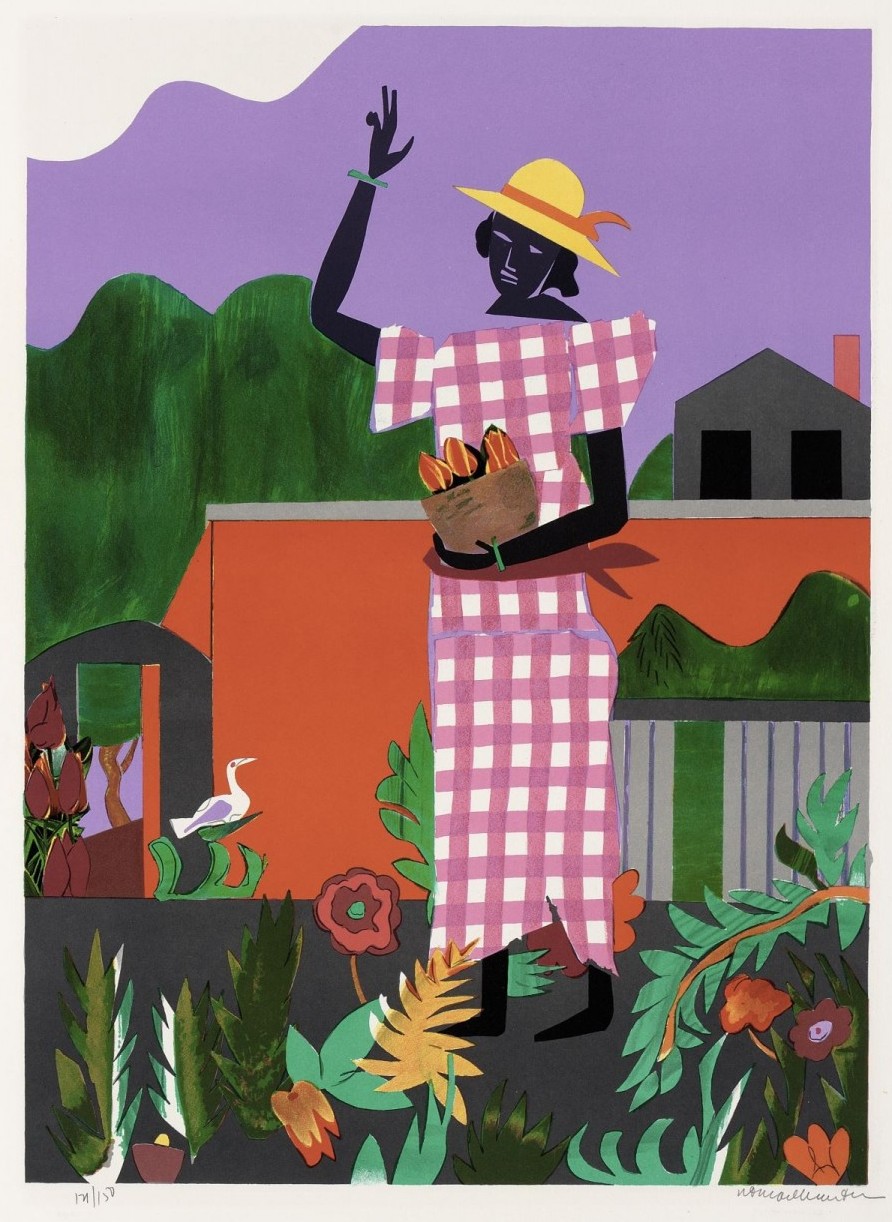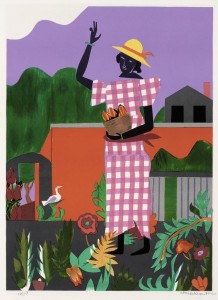Lesson Plan
Direct Instruction
Anticipatory Set: Say, “Raise your hand if you have ever been to a garden. What are some things you saw there?”
Place the image of In the Garden where the children can see it and hold up the book The Magical Garden of Claude Monet.
Introduce the lesson: “Today we are going to read a book about a little girl who visits a very special garden an artist named Monet loved to paint. We will talk about why the author chooses to use the words he does to describe the garden and look at the illustrations in the book of the beautiful garden. Next, we are going to look at a different example of a garden that an artist named Romare Bearden created and talk about what he chose to include in his own picture of a garden. Then we will do our own special garden art project!”
Read the story, The Magical Garden of Monet. Ask questions to check comprehension:
- What does the little girl see in the garden?
- How do you know?
- What words did the author use to describe what the garden looks like?
- How did the illustrator choose to show you what the garden looked like?
Next, turn to the print of In the Garden by Romare Bearden. Ask:
- What do you see?
- What do you think this is a picture of?
- How do you know it is a garden?
- What is the same as the pictures of the garden in the story?
- What is different?
- What are some things you think most gardens have?
Make a list of things that are usually in a garden (e.g., dirt, flowers, plants, bugs, leaves).
Say, “Now close your eyes. In your mind, imagine your own special garden. It can be a magical, dream garden, so think about what you want your garden to look like. Keep that idea in your head. Now, you are going to make your own garden. We can make our garden of things that otherwise would be garbage so we are keeping the earth clean by recycling! Recycling is reusing something instead of throwing it away. You can us these recycled materials to make your garden however you want—but make sure that we can tell it is a garden!”
Show a completed example of the “dream garden” that children will create with re-cycled bottle caps, straws, and cereal boxes. They can use the glue to make dirt at the bottom of the page for the dirt in the garden.
Guided Practice/Application
Students will create their own imaginary dream garden made of recycled materials.
Independent Practice/Center Suggestions
ABC Center
Have an image of In the Garden by Romare Bearden and a bowl of letter magnets, they pick a letter and find something that begins with that letter from the picture.
Art
Collage of garden things cut out of magazines, flowers, bugs, etc.
Writing
Writing a letter to Claude Monet.
Math
Pattern block flower puzzles.
Science
Plant a seed in a Ziploc bag.

